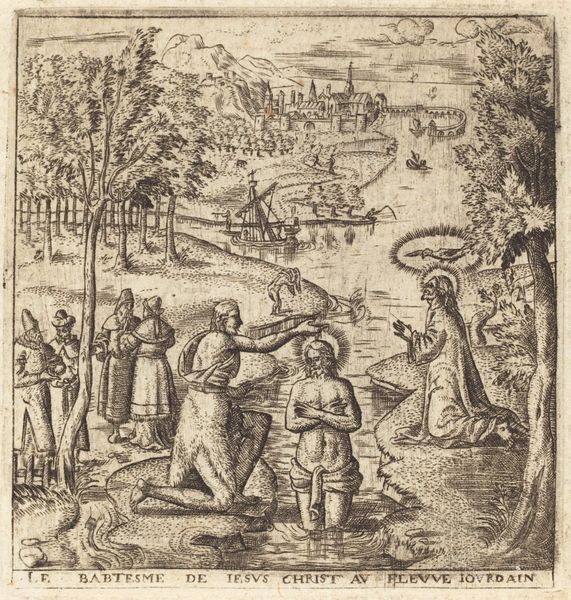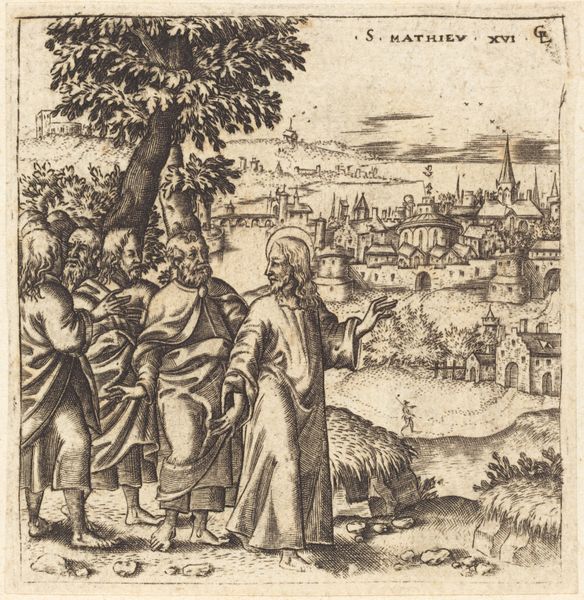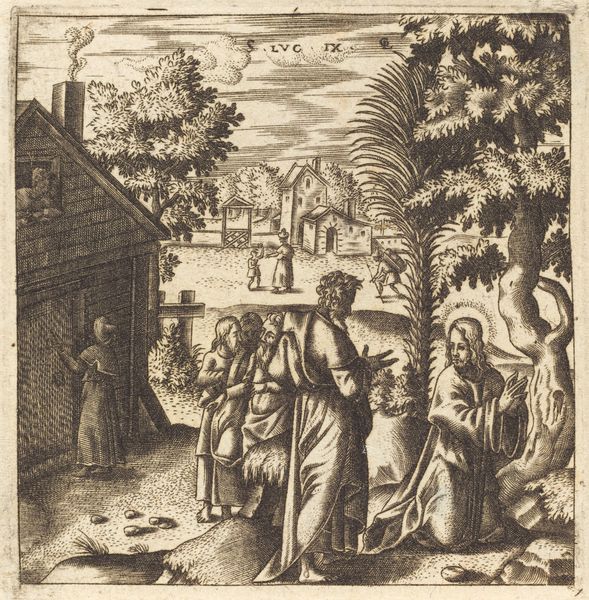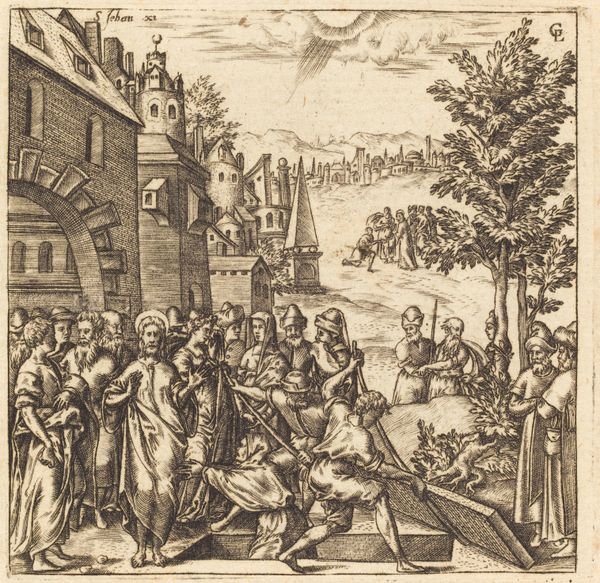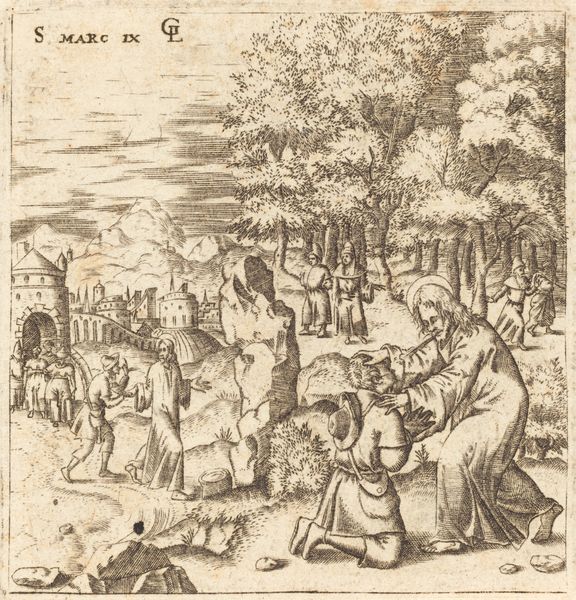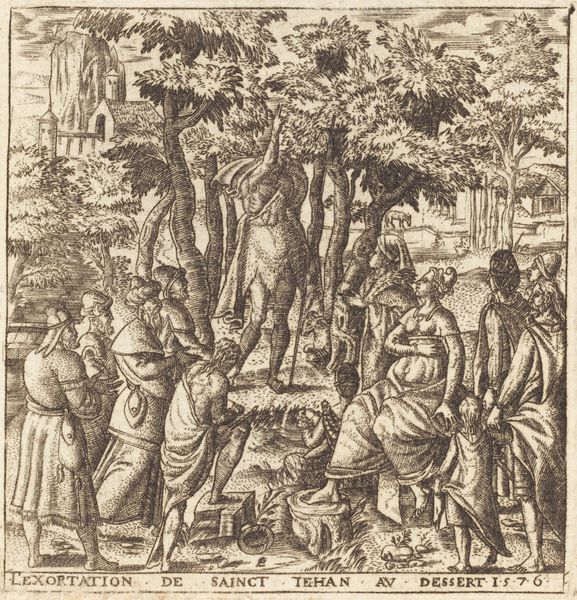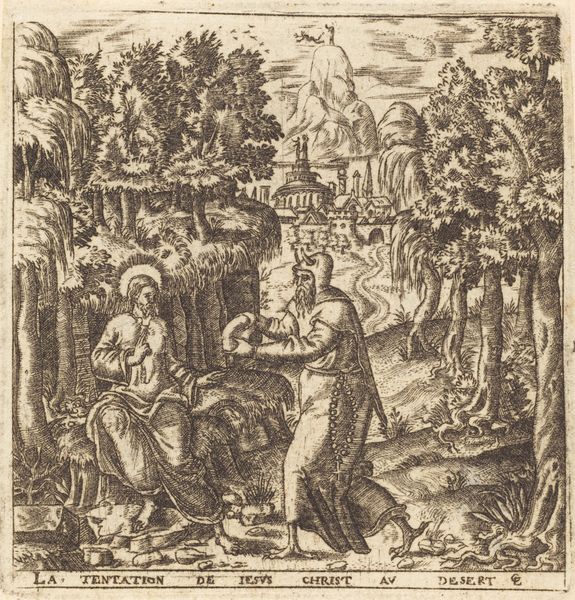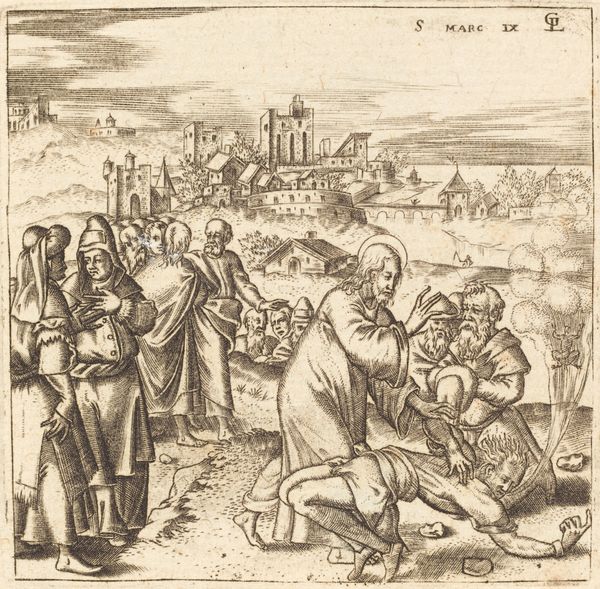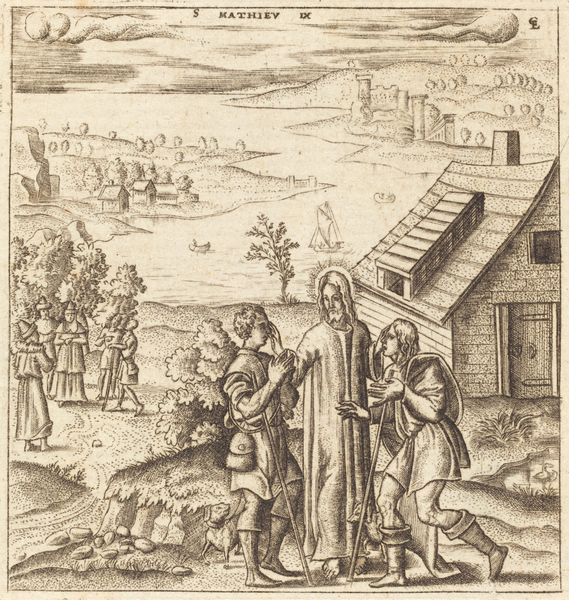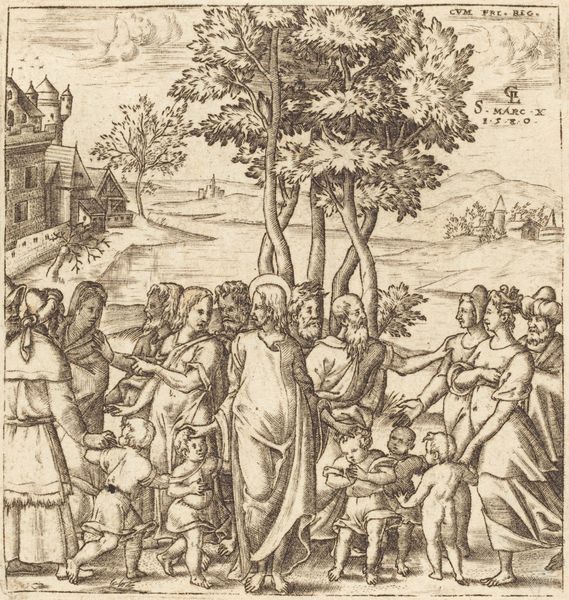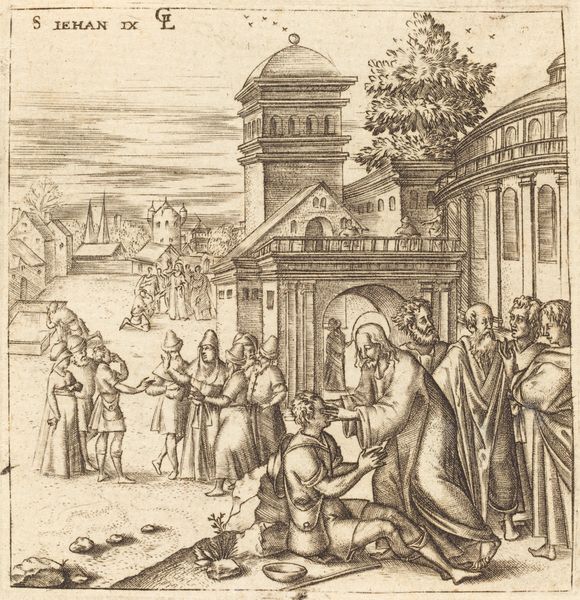
drawing, print, ink, engraving
#
drawing
#
pen drawing
# print
#
landscape
#
ink
#
history-painting
#
italian-renaissance
#
engraving
Copyright: National Gallery of Art: CC0 1.0
Curator: This intricate engraving is "The Children of Zebedee," made by Léonard Gaultier around 1576 to 1580. You'll notice it's ink on paper, showcasing a blend of history-painting and landscape elements. What springs to mind for you? Editor: First off, the miniature detail is incredible, almost feels like looking into another world. But something about the mood feels off... a strangely detached quality despite all the activity depicted. A kind of formal stiffness, like posed figures in a play. Curator: Indeed, and considering it’s an engraving, think about the process: a metal plate meticulously incised to create this very image. Gaultier would have been immensely skilled, deeply understanding material properties to control the distribution of ink. What implications might this process hold when conveying something historical? Editor: It's fascinating how the labor shapes the final image! You can tell the artistic intention from the sheer effort it must have taken. So, the story—the biblical narrative itself—gets subtly molded by Gaultier’s craftsmanship, and our reception is framed by his choices in tool and technique. Does the act of reproduction itself add another layer to the narrative’s reception? Curator: Precisely. Reproduction creates distribution and audience engagement; copies spread a particular version of a story with intended messaging. This isn't just about art; it is an object deeply entwined with religious, social, and political narratives. Look at the deliberate use of linear perspective for symbolic hierarchy. Editor: You are right. I almost overlooked the way it subtly guides the eye—towards what we're *supposed* to focus on. But there's a sense of confinement as well, maybe the limited space forces a concentration of emotion into a small vessel. It is an odd mix, the biblical made intimate, made like...dollhouse scale! Curator: Yes! And perhaps it speaks to the dual nature of prints at that time, serving simultaneously as devotional objects and demonstrations of artistic skill for a burgeoning print market. Editor: This close analysis changed my view on this tiny marvel, from being 'detached' to recognizing that is what generates engagement on another level. Now I feel so ready to engage with those narratives myself. Curator: Likewise, reflecting on the technical and material elements truly opened up new interpretative avenues for appreciating not just the artwork itself but also the broader socio-economic systems influencing artistic production and consumption.
Comments
No comments
Be the first to comment and join the conversation on the ultimate creative platform.
